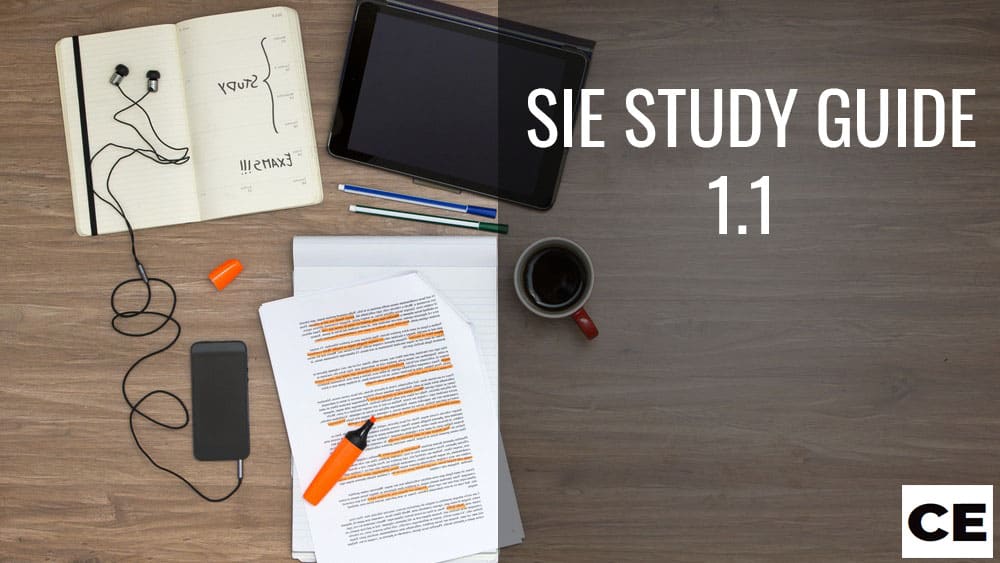SIE Study Guide Navigation
- SIE Study Guide Home
- 1.1 Regulatory organizations, establishments and participants in the capital market
- 1.2 Structure of capital markets
- 1.3 Understanding economic factors
- 1.4 Types of security offerings
- 2.1 Securities products in capital markets
- 2.2 Various types of investment risk
- 3.1 Settlement, trading, and corporate actions
- 3.2 Compliance considerations and customer accounts
- 3.3 Prohibited activities
- 4.1 Associated persons SRO regulatory requirements
- 4.2 Reportable events and employee conduct
To start, let’s look at two critical aspects of the regulatory requirements.
They deal with registration and continuing education.
Registration requirements
Those who want to apply for membership as an associated person must start by filling out a Form U-4.
This provides a history of each applicant in terms of their employment, any disciplinary actions against them, and more.
Next up, a mandatory background check is carried out for those who want to become registered representatives in the securities industry and it includes taking fingerprints.
Regulations state that anyone who will handle customer securities or cash must be fingerprinted with the records submitted to the US attorney general.
This is not a requirement for most ministerial (clerical) staff or anyone only selling DDPs, variable annuities, or mutual funds.
Should a candidate have a felony conviction that is more than 10 years old, it might still disqualify them from becoming a registered representative.
If they have had a conviction in the last 10 years, they most certainly will be disqualified.
Note these are not all felony convictions, however.
They only relate to misdemeanors that concern securities and money.
If you were caught for a DUI, for example, that will not count against you.
There are certain requirements when it comes to registration too.
These pertain to state (or blue sky) laws and all candidates, therefore, have to pass the Series 63 or state securities law examination.
It’s pertinent at this point to look at why someone applying for registration for FINRA membership might be rejected:
Here’s are several reasons:
- They have been expelled for another SRO or the equivalent of one in a foreign country
- There are currently under SEC orders, or those from a foreign regulatory authority that has denied, suspended, or revoked registration before.
- Caused another associated person or broker-dealer to be suspended or expelled by the SEC, another SRO, or foreign regulatory authority.
Applicants’ registration will be immediately disqualified if:
- They made false statements in their application
- They have had either a US or foreign conviction or misdemeanor conviction involving money or securities in the past decade
- They cannot act as an investment advisor, broker-dealer, underwriter, or in any other position in the financial services and securities industry due to court injunctions.
We’ve mentioned registered and non-registered persons in this section but it’s important to understand their position in the securities industry.
Well, a registered person is pretty simple.
This is anyone that engages in the securities business, either as an individual or as part of a firm.
But of course, investment firms have non-registered people working for them too.
This describes office workers, for example, like a secretary, or someone in the marketing department.
They don’t have anything to do with the investment side of things at all but play an important role in the company still.
The last thing to talk about concerning registration involves the SIE exam itself.
Candidates who have passed this exam are not automatically registered and are still seen as nonlicensed until registered through FINRA.
They may not perform any functions of a registered representative until that happens.
Continuing education requirements
As with all professions nowadays, those working in the securities industry have to take part in continuing education programs.
These are regulatory requirements as stipulated by FINRA.
All registered representatives must undertake their first continued education sessions within the second anniversary of the date on which they were first registered.
This is known as the regulatory element of continued education.
Thereafter, however, a continued education test is required by FINRA every three years.
As for member firms, FINRA also stipulates that they hold their own continuing education programs.
This helps keep staff up to date, particularly when it comes to current rules and regulations as well as any changes that may be made by FINRA and other regulatory bodies.
This is known as the firm element of continued education.









